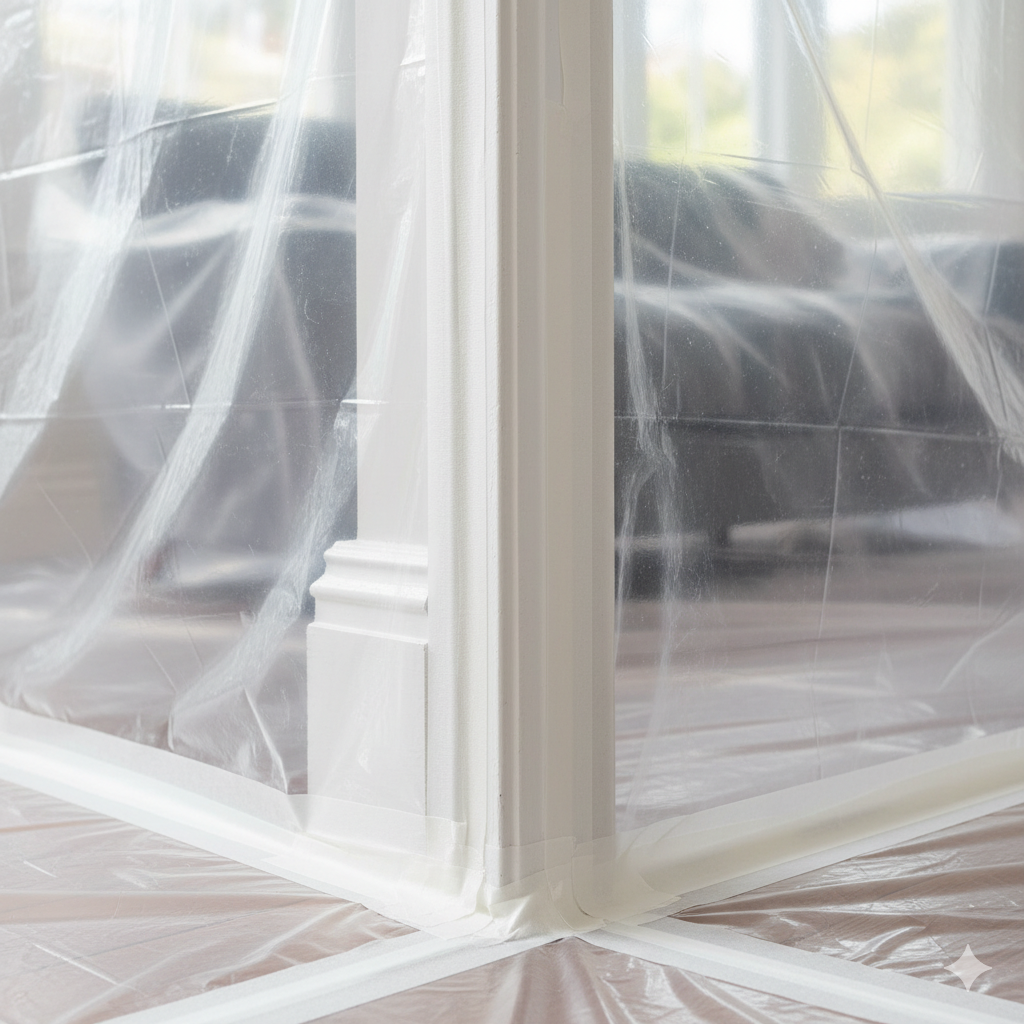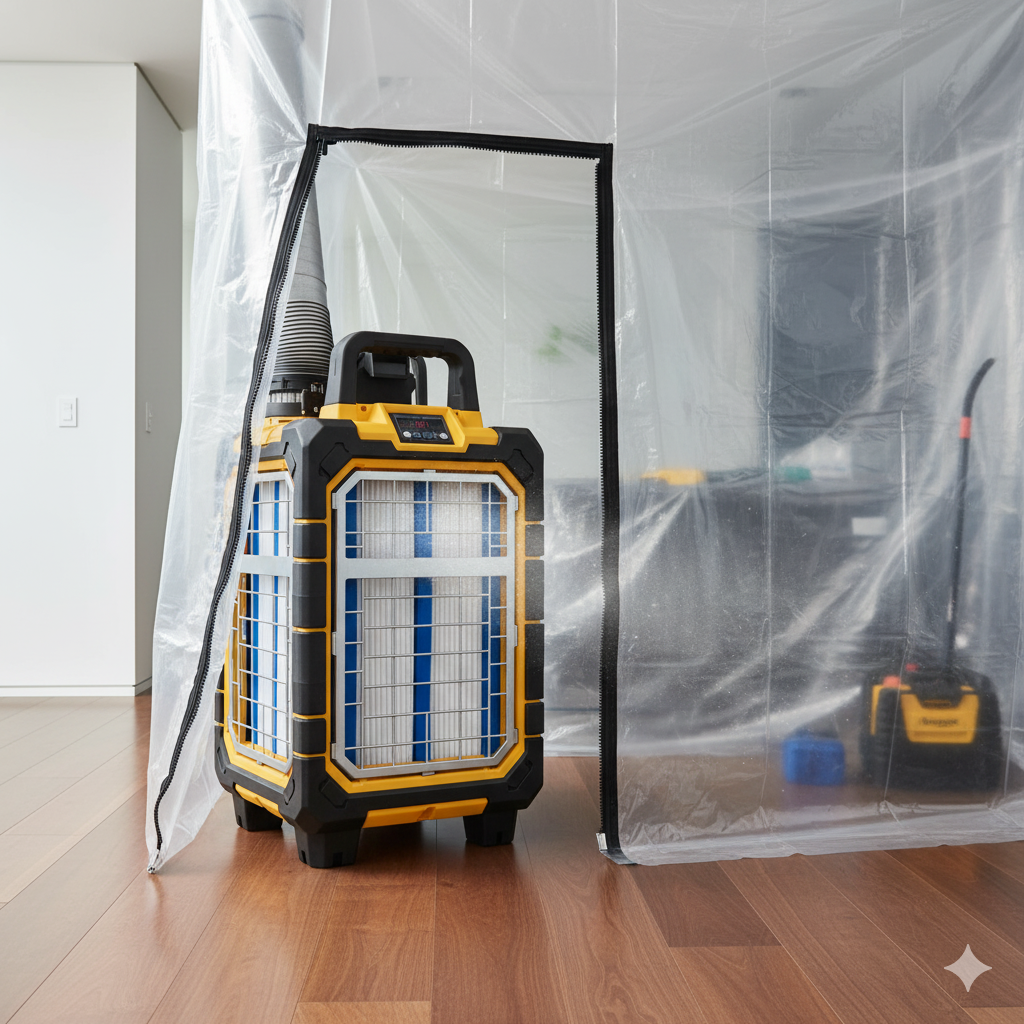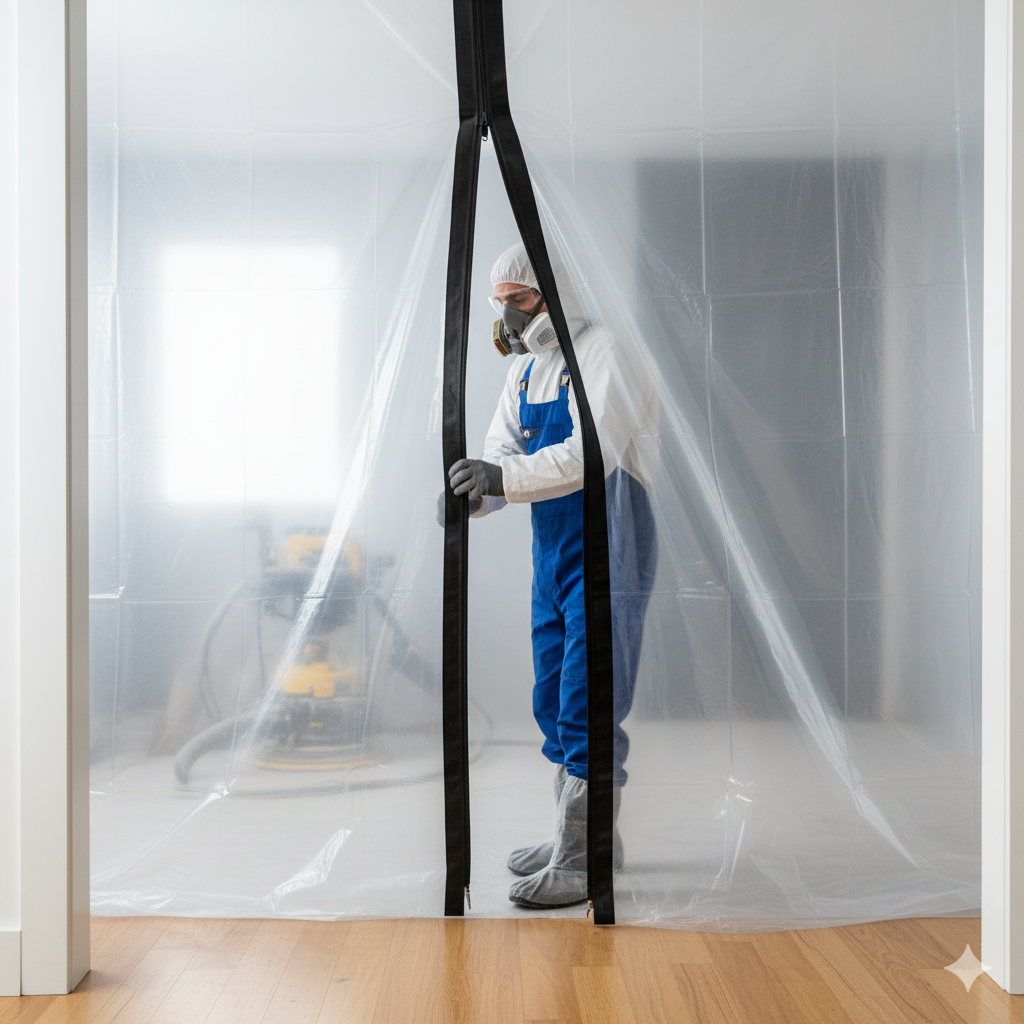G’day, Sydney homeowners! We all love the bright, airy feel of open-plan living. It’s the Aussie dream, right? But when it comes time for a major upgrade, like professional flooring project or floor sanding, that beautiful open space quickly turns into a dust highway. The big question is: How do you keep the dust from your reno out of your pristine living areas?
The answer lies in mastering the art of the containment zone. As expert content writers who work across top industry publications, we’ve broken down the best practices for effectively sealing off the work area in your Sydney home. This isn’t just about tidiness; it’s about protecting your health, your furniture, and your investment. Visit us at elyment.com.au to see how we manage dust on every job.

Why Containment Zones are Crucial for Open-Plan Sydney Homes
In a traditional home, a closed door offers decent separation. In open-plan Sydney homes, however, dust particles from a home renovation—especially from intensive work like sanding old timber floors—can travel everywhere. Without proper work area sealing, you risk:
- Air Quality Issues: Fine dust settling throughout your house and ventilation system.
- Contamination: Dust damaging electronics, fabrics, and soft furnishings.
- Project Delays: Clean-up becoming a massive, time-consuming chore after the flooring project.
- Client Satisfaction: Keeping the family happy and comfortable during the reno.
Best Practices for Creating an Effective Work Area Sealing Barrier
Creating a reliable containment zone requires more than just chucking a tarp down. It’s a structured, professional process. Here are the steps the experts take:
Step-by-Step Guide to Sealing Off the Work Area
- Clear the Decks (and Walls): Remove all furniture, wall hangings, and valuables from the immediate work area. This makes sealing easier and protects your belongings.
- The Perimeter Seal (Plastic Sheeting): Use heavy-duty, 6-mil plastic sheeting (builders’ plastic) to construct walls from floor to ceiling around the entire renovation area.
- Air-Tight Adhesion: This is where many DIY attempts fail. Use high-quality, non-marking painter’s tape (like the blue or green stuff) to meticulously seal every edge of the plastic sheeting to the floor, walls, and ceiling.
- The Zip Door System: Create a dedicated entry and exit point using self-adhesive plastic zippers. This maintains the negative pressure and stops dust from escaping every time someone enters or leaves the containment zone.
- HVAC Shutdown: Crucially, turn off or seal all Heating, Ventilation, and Air Conditioning (HVAC) vents within the work area and immediately adjacent rooms. This prevents the system from sucking dust and spreading it throughout the property.
- Establish Negative Pressure: A professional technique involves using an air scrubber or air mover (HEPA filter) placed inside the containment zone to pull air in and filter it out, creating negative pressure. This means any air leaks pull outside air in, rather than pushing dusty air out.

The Professional Edge: HEPA Filtration and Air Scrubbers
For large-scale or high-dust impact flooring projects, relying solely on plastic sheeting isn’t enough. Top-tier contractors, like those at @ElymentGroup, deploy HEPA air scrubbers. These machines actively manage the air, capturing 99.97% of airborne particles down to 0.3 microns. It’s the difference between merely containing the dust and actively cleaning the air.
If you’re planning a full revamp of your open-plan Sydney home, insist on these professional dust control standards. It’s peace of mind, knowing your other rooms are safe and sound.
Key Takeaways for Your Next Sydney Reno
To sum up this essential work area sealing advice:
- Open-Plan Requires More: Containment zones are non-negotiable in open layouts.
- Seal Everything: Pay attention to power outlets, vents, and lighting fixtures within the zone.
- Invest in Zippers: A proper zippered entry is a game-changer for dust management.
- Go Pro for Flooring: For messy jobs like timber floor sanding, professional-grade dust control with HEPA filtration is the only way to ensure minimal impact.

Ready for a Flooring Project Without the Dust Disaster?
Stop stressing about the mess. Our team specialises in immaculate dust containment for all Sydney home renovation projects. Click below to chat with a dust-free reno expert today.
Ready to Renovate Dust-Free?
Book Your Dust-Free Reno NowThis guide was informed by best practices in the Australian construction and renovation sector, adapting key strategies for residential application.
